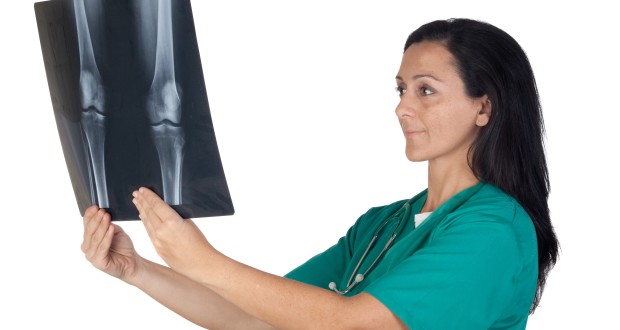Published: May 28, 2014
Osteoporosis
Osteoporosis literally means “porous bones” that become more brittle and breaks easily. Bone is continually being broken down and replaced. When you have osteoporosis, more bone is broken than being built and this causes more bone loss to occur. Your bones can break more easily.
Before menopause estrogen protects our bones. However, when menopause occurs, and our levels of estrogen decline, we lose bone density.
Estrogen deficiency occurring at menopause is the most likely factor that women develop osteopenia (low bone mass) and osteoporosis. It may rapidly occur in the first five years after menopause, when bone loss can reach 3 to 4 percent of total bone mass.
Osteoporosis is called “the silent disease” because it has no symptoms until bone loss is significant and fractures occur, most commonly in the wrist, spine and hip.
Are You At Risk?
Here’s a list of risk factors. If you have any of these risk factors, talk to your clinician and develop a plan to minimize risk or treat.
- Caucasian or Asian
- Early menopause (before age 40)
- Surgical menopause
- Postmenopausal and not taking hormone therapy
- Family history of osteoporosis
- Being very thin
- Sedentary lifestyle
- Low calcium intake
- Low vitamin D intake
- High caffeine intake
- High alcohol intake
- Smoke cigarettes
- Endocrine disorder
- Diabetes
- Hyperthyroidism
- Cushing’s Disease
- Hyperparathyroidism
- Celiac Disease
- Steroid therapy for more than 6 months
Evaluation
The Fracture Risk Assessment Tool (FRAX) calculates 10 year probability of hip, spine, forearm or shoulder (a bone density test may or may not be required)
Tests to measure bone density:
- DEXA (dual-energy X-Ray absorptiometry scan)
- Ultrasound (doesn’t require radiation)
Prevention of Osteoporosis
- Reduce the risk of falling – wear sturdy shoes, make sure you don’t trip on something in your house or outside in inclement weather.
- Exercise for strong bones (weight- bearing-like walking or lifting weights) Keep physically active 30 minutes per day or longer.
- Eat foods that build bones (dairy, legumes, green vegetables (spinach, broccoli), and oily fish (sardines, Mackerel)
- Get out in the sunshine – 10-15 minutes per day without sunscreen which will give you plenty of vitamin D. You need vitamin D to absorb the calcium you get from your food.
- Decrease your risk factors (stop smoking)
- Discuss the use of hormone therapy
Treatments of Osteoporosis
Talk to your clinician about treatments available and if you take a prescribed treatment, reevaluate it on a regular basis.
Prescription Medications for Osteoporosis Management
To learn more about approved drugs for postmenopausal osteoporosis in the United States and Canada, log onto:
http://www.menopause.org/docs/default-source/professional/otcharts.pdf?sfvrsn=6
Advertisement:
 Red Hot Mamas In Charge of Change.
Red Hot Mamas In Charge of Change.

